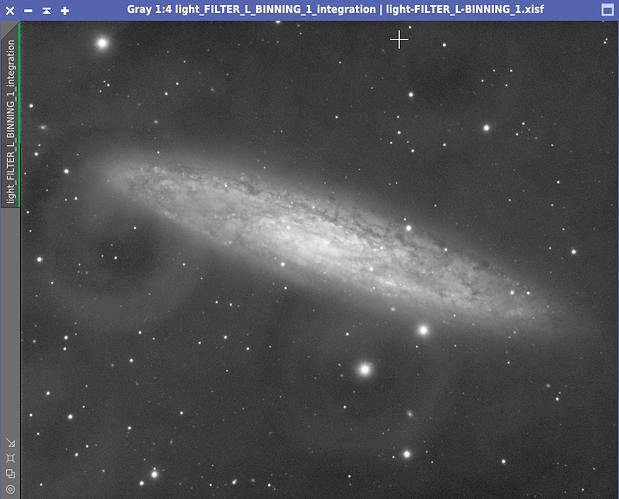I have just made a switch from SGPro to Voyager.
So far I am liking it a lot. I managed to do most of the tasks and had a sequence run last night.
The focusing was fantastic and the handling of guide star loss was also very good.
For the first time I did not have to intervene at all while the sequence was running.
So overall I am very happy. However, I have encountered a few problems / questions:
Session start up routines
I have to set up and take down each night: When I first set up, I will run AP Jog (for AP Mach1 mount control) and SharpCap Pro to do a polar alignment using a mini guide scope. The mini Guidescope and the camera attached to it are both there only for this purpose. After polar alignment I will quit SharpCap Pro and I do not use the mini Guidescope and its camera any more (sometime I will remove them completely).
I will then start Voyager. At this point, if I have not been using a particular scope for a while, I will need to do the following:
(a) Rough focus
(b) Plate solve to get the precise orientation of the camera and synchronise mount to a known position
© Slew to a focus star
(d) Achieve a better focus
With my old software, I will put the camera on bin 4x4 and then take multiple 1s exposures in a loop, while manually adjusting focus until the stars are roughly in focus. Then I will slew to a place with many stars e.g. near Dec 0 due North (as I am in Southern hemisphere). Then I will take an image and do a blind plate solve and sync, so that the mount will know where it is pointing, the software will know what orientation the camera is and the exact pixel scale of the setup. Then I will slew to a nearby star to get a better focus. After that I can then get on with any sequence as normal. I typically do these setup routines while the CCD is cooling.
Now with Voyager I am not sure how I can duplicate these routines. In particular, I know how to capture one image at a time but it does not seem to be a good way to get rough focus. Also I wonder if the above steps can be automated somewhat with Dragscript?
ASPS
ASPS and Platesolve2 both seem to struggle with blind solving the initial image in the above routine (when focus is only rough, orientation is unknown, and pixel scale may not be accurate). I have made sure that the correct indices are downloaded. At the end, I have to resort to using Astrometry.net web. My question is, does Voyager pass any focal length info, orientation and pixel scale to ASPS when doing a blind solve? When I select blind solve, it usually means that I do not know the orientation. I am wondering if that’s the reason why blind solves fail here.
ASPS also seem to hang / become unresponsive so I have been using Platesolve2 for subsequent solves (which works fine).
Flat
In my last test sequence, I captured all the light frames (LRGB), slewed to zenith manually (so that I could place the manual light panel on the scope without it falling off) and then run the auto-flat sequence. The auto flat sequence seemed to work well, except that the after having gone through L, R G and B for the light frames and returning to L for the flat frames, the dust motes and reflections in the light frames and flat frames did not match any more. As a result I ended up with a Lum master with uncorrected light reflections / dust motes…like this  :
:
I am wondering if one can program Voyager to take light frames for one filter, then slew to zenith, pause so I can put on the panel (but I can’t figure out how to program for one), take flats, pause (so I can take the panel off), slew back to target and the start taking light frames again for a different filter.
Thanks for any tips
Henry
